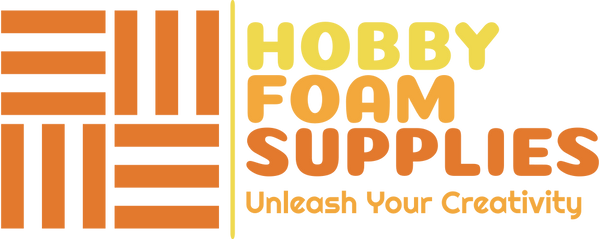Building a Diorama: A Step-by-Step Technical Guide for Hobbyists
1. Planning the Diorama
Every good diorama starts with a clear concept.
-
Theme: Choose a specific moment or scene (e.g., WWII trench, sci-fi outpost, forest trail). This sets the mood and guides all choices from materials to lighting.
-
Scale: Match the scale of the figures and terrain elements (e.g., 1:35, 1:72). Mixing incompatible scales can break immersion.
-
Layout: Sketch your layout roughly on paper. Plan paths, focal points, and viewing angles. Use the "rule of thirds" to place your main elements dynamically.
Pro Tip: Always design with the viewer's eye in mind—what should draw attention first?
2. Building the Base
The base is the foundation of your diorama—both structurally and visually.
Materials:
-
Foam board or MDF: Rigid and lightweight; choose based on whether mobility or durability is more important.
-
Hot glue or PVA glue: Use hot glue for fast setting; PVA for a cleaner bond.
-
Clay or filler: Shape the ground contours, rocks, or walls.
Process:
-
Cut your base to size.
-
Layer foam for elevation changes.
-
Carve slopes or trenches.
-
Apply texture using modelling paste, sand, or a blend of PVA and sawdust.
Tip: Create a slight angle to the terrain to avoid a "flat" look, unless portraying an urban or desert scene.
3. Sculpting Terrain
This is where the story takes shape—literally.
-
Groundwork: Use foam for elevation. Clay works well for paths and walls.
-
Texture: Embed bark (for rocks), gravel, sand, or twigs.
-
Cracks and Details: Score the surface with a hobby knife, then brush on watered-down glue to seal.
Detailing Tip: Add real soil sifted through a fine mesh for a realistic look. Bake it first to remove bugs or moisture.
4. Painting the Landscape
Painting brings realism through shadow, depth, and contrast.
-
Base coat: Use dark browns, greens, or greys.
-
Wash: Apply a thin, watered-down darker colour that flows into cracks.
-
Dry brush: Use light colours on raised textures with a nearly dry brush.
Layering Tip: Build up paint in stages, alternating matte and satin finishes for variety.
Tools to Have: Old makeup brushes, sponge pieces, pipettes, and a palette.
5. Adding Details and Props
Miniature details bring realism and scale.
-
Figures: Choose expressive poses. Slight tilts and head turns add realism.
-
Props: Scatter debris like bricks, crates, or broken signs.
-
Weathering: Add soot, rust streaks, oil stains. Use weathering powders and apply sparingly.
Tips for Props:
-
Use wires to simulate barbed fences.
-
Create signs using printed decals or hand-painted wood slats.
6. Lighting and Environment Effects
Optional but powerful.
-
LEDs: Add realism to headlights, campfires, or control panels. Use coin cell batteries or USB-powered systems.
-
Fog/mist: Cotton wool, teased lightly and dry-brushed grey, simulates smoke.
-
Water: Use layers of resin with ink tints. Gloss gel can simulate ripples or puddles.
Environment Tip: Paint the base of water bodies a gradient from dark to light to simulate depth.
7. Final Assembly & Sealing
-
Fix figures last: Only after all terrain and background work is done.
-
Seal: Use matte spray for most parts. Gloss on water or metallic elements.
-
Box or case: Use clear acrylic display boxes to protect long-term.
Transport Tip: For competitions or exhibitions, glue only key parts. Use magnets or pegs for detachable parts.
Conclusion: It’s a Story in 3D
A diorama is an artform for hobbyists who love combining engineering, painting, and storytelling. Whether you're crafting a battlefield or a quiet woodland path, the goal is the same: immerse your viewer in a moment.
Have a photo of your own diorama to share? Comment or tag us with your creation.

